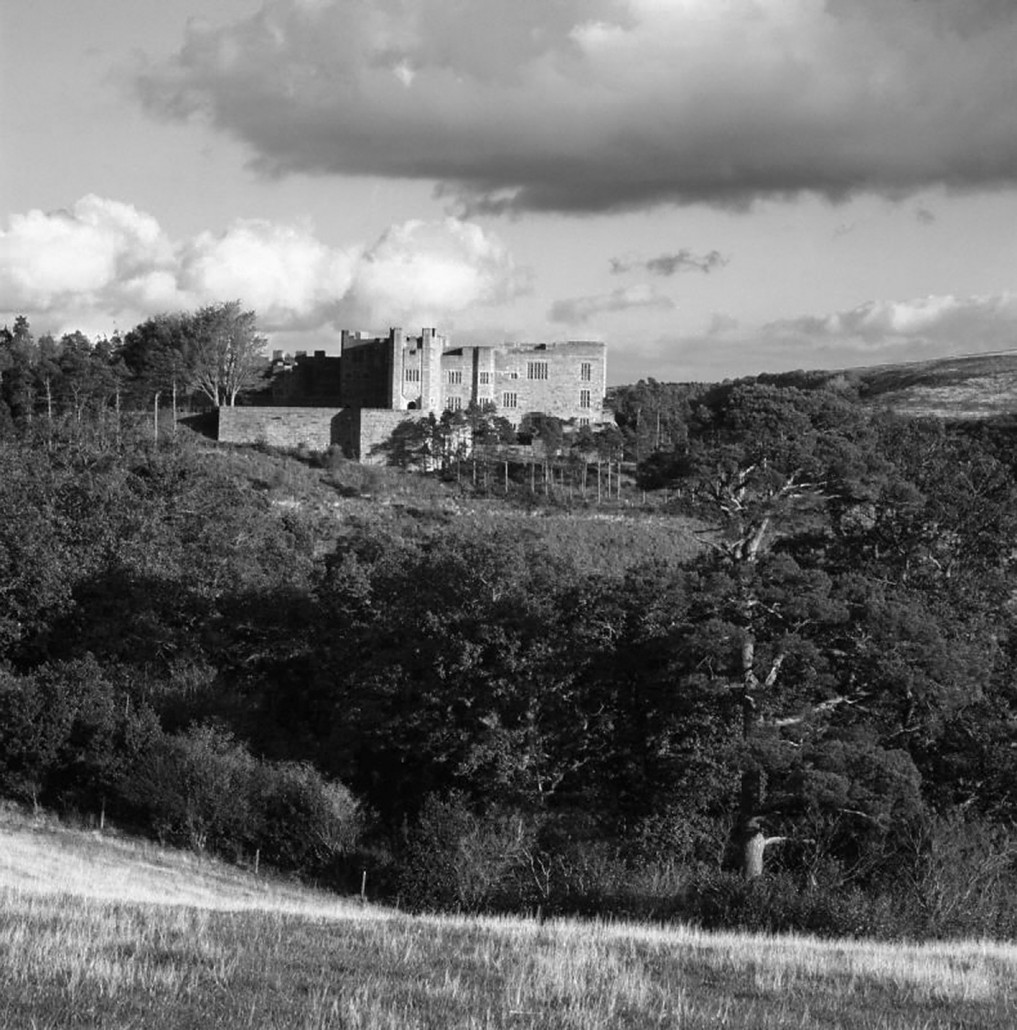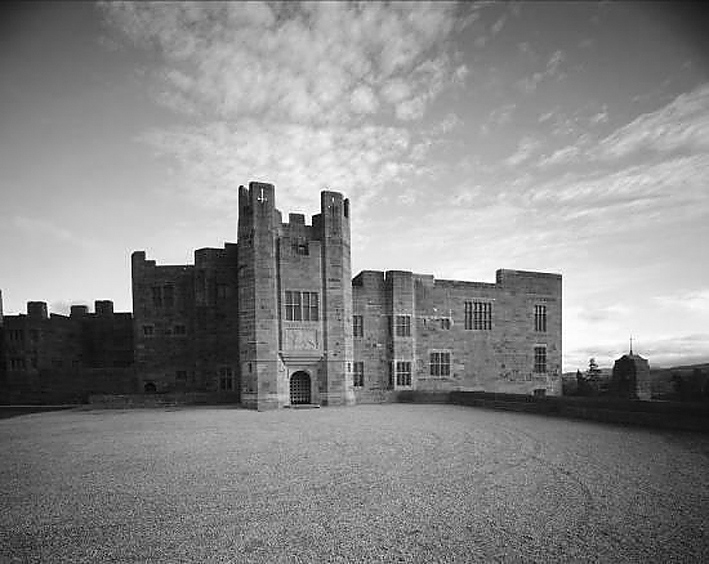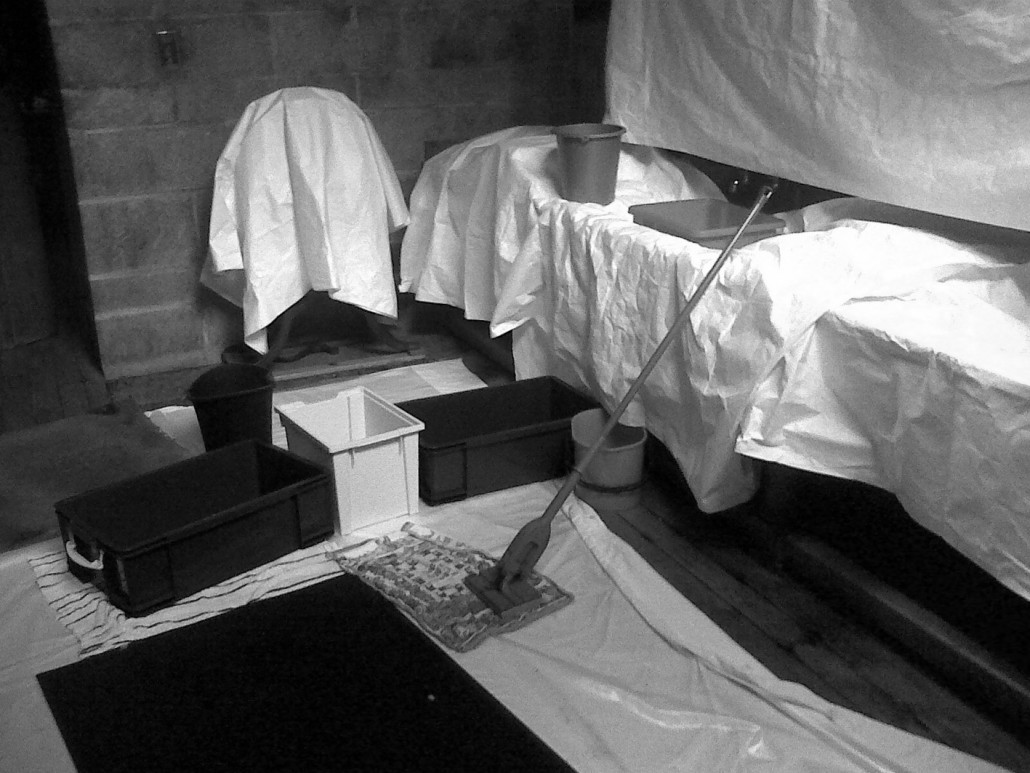Castle Drogo
Situated on a granite outcrop on the edge of Dartmoor National Park, Castle Drogo was the last castle to be built in England and is a Grade I listed building. It is often referred to as the jewel in Dartmoor’s crown. Granite used to build Castle Drogo came from quarries within 30 miles of the property. This has ensured that the building blends into the surrounding landscape and appears as if it has been here for hundreds of years.
Castle Drogo was built between 1911-1931 for Julius Drewe, self-made food retailing millionaire and founder of Home and Colonial Stores and was designed by Sir Edwin Lutyens. It is universally acclaimed as a masterpiece. Lutyens incorporated eight centuries of historic and artistic development into its brilliant design. The austere exterior, working portcullis and high parapets speak of Norman times; while the wildly imaginative interiors reflect influences from the Tudor to the Georgian. Innovative electrical fittings reveal it as a building of the modern age.
Castle Drogo is being destroyed by water penetration. High on Dartmoor, it is exposed to strong and almost constant wind and rain, while flaws in the original construction mean that significant amounts of water penetrate the roof, windows and pointing. Castle Drogo leaked before it was finished due to the over-reliance on asphalt as a permanent solution to water ingress. The innovative design turned out to be no match for the Dartmoor weather and the castle has let in the water from the start. The National Trust has been searching for a long-term solution through working with engineers, architects and consultants and has found a system which has already proved successful on Castle Drogo’s Chapel roof, which is now watertight. A project is now underway to extend this solution throughout the castle.
This is a huge project and conservation will be on a grand scale:
● Installation of the new waterproof Bauder roof system: 2,355 granite blocks weighing 680 tonnes will have to be removed and later replaced
● Stop the windows leaking: 913 windows containing 13,000 panes need to be refurbished
● Stop the walls leaking: over 60,000 metres of pointing needs to be replaced.
Depending on funding, the building works will begin in early 2013 and the property will continue to be open to the public throughout. The building works will provide the opportunity to share the history of Castle Drogo in a new and exciting way. The following article describes the project in more detail.
We have a £1.5 million fundraising target to achieve if the work is to take place. We have so far raised £990,000 (as of April 2012). We are delighted that Martin Lutyens is chairman for our appeal committee. Please contact Martin if you wish to help save Castle Drogo by supporting the appeal.
Castle Drogo Project Team, National Trust
Remedial Works Update
In the Newsletter of Summer 2008, I reported on the background of the remedial works at Castle Drogo. The house had been built on a promontory overlooking Dartmoor by Lutyens for Julius Drewe between 1911 and 1931. However, even before the Second World War, the myriad of flat roofs that form the dramatic roofscape which makes Drogo so memorable, were found to be leaking, and patch repairs were regularly carried out to the asphalt roofing. By the 1960s, the difficulty of searching for failed areas resulted in the permanent removal of all the granite paving that Lutyens had laid so carefully over the roofs to conceal the asphalt. This was a disaster for Drogo as it seriously impacted on Lutyens’s design. Attempts to rectify water penetration continued after the acquisition of the property by the National Trust in 1974, and Anthony Drewe, the grandson of Lutyens’s original client, is remembered for re-pointing the elevations from a hoist lowered over the battlements. Between 1983 and 1989, a major campaign of repairs involved the installation of a lead damp proof course and new asphalt was laid across all of the high-level roofs.
Signs of failure were again apparent in the early 1990s and it was decided to start afresh. Our practice, Peter Inskip + Peter Jenkins Architects, was appointed as consultants and recommended a programme of investigations into causes of the problems. Working in close conjunction with the Technical Division of English Heritage, on-site testing started in 1996 under the direction of my colleague, Mehmet Berker. It was clear that water penetration was still occurring through both the roof and the walls, and that the failure of the mastics allowed water to penetrate at the windows. The testing of alternative mortars and other materials lasted for six years and employed the latest computer technology. Because of the severe conditions on the edge of Dartmoor a weather station was established on the roof to record water penetration. Analysis of Lutyens’s drawings and the extensive records kept by the clerk of works when the castle was under construction, revealed aspects of the architect’s technical detailing as well as his aesthetic vision. For Lutyens, it was essential that the castle was composed of sheer planes of granite, and these extended over both elevations and roofs.
It was also found that the vertical tanking that Lutyens had introduced to protect the inner leaf of the solid core walls was dependent on its continuity with the horizontal membranes that protected the roofs. No provision had been made for differential movement, and it is likely that the asphalt cracked and the building leaked soon after it was finished. The later introduction of lead flashings failed to resolve the problem: not only was the simplicity of the elevations seriously compromised, but cementitious mortars had caused water to leach out of the walls, disfiguring the granite with large deposits of calcium carbonate.
In most cases a return to original construction is the best repair method. However, this was clearly not appropriate at Drogo as the choice of the original materials was flawed. A new approach had to be determined. Through the on-site trials, an Italian hydraulic lime mortar was identified as a suitable replacement mortar, and the decision to employ modern roofing technology that could accommodate the degree of movement at abutments, led to the development of a strategy with a German firm of roofing specialists. The solution employed Bauder’s water proofing membrane and insulation in conjunction with Ruberoid cloaks and damp proof courses, each detailed to suit the particular abutment. It will provide an inverted “warm” roof deck that will eliminate the interstitial as well as the surface condensation that affected so many bedrooms. The choice of the membrane was determined by its resistance to differential movement, that of the insulation above the membrane by its ability to resist condensation damage and cold bridging problems. Reinstatement of the granite paving slabs using granite from the same quarries that Lutyens had used, not only prevents uplift of the insulation, but recovers the original design of the building by restoring the fifth elevation of Castle Drogo.
To achieve continuity, large sections of the granite parapets and facings have to be taken down in order to allow the damp proof courses and cloaks to be inserted. At the windows, new mastics that require far less maintenance have to be inserted to secure the joint between the granite aperture and the bronze frame.
Having determined the repair methods, the repair of the chapel was treated as a trial phase. The completed works have been monitored over the last three years and have demonstrated that the repairs have performed successfully over time. A minor adjustment, however, was found necessary to the windows.
After some debate, the repair of Castle Drogo was agreed by the National Trust to be amongst its highest national priorities, and the Trust appointed Tim Cambourne, who had just finished the restoration of Tyntesfield House, as its project manager. Tim decided that the castle should be repaired in two phases, dealing with the south and north halves of the building in sequence. As well as reducing the time that the residential accommodation would be out of action, this allowed the castle to remain open to the public throughout the five years that it would take to complete the repairs. Interpretation of the construction work had proved popular with visitors during the trial phase, and it was decided that this should continue with an exhibition and tours.
We were re-appointed as architects for the next phases in the Summer of 2011 with Jeff Stott of Mann Williams as structural engineer. The work remains very much a team effort and we continue to work very closely with Wesley Key, the building manager at Castle Drogo who is one of the greatest assets of the National Trust. His family worked as stonemasons on the original construction with Lutyens, and his own indefatigable knowledge and records of the building, as well as his wholehearted enthusiasm for Drogo, have played a crucial role in all the investigations and works. Frequently, it is Wesley’s photographic archive of the 1970/80s remedial repairs that assist in the understanding of the problem to be solved today.
A measured survey and an advanced contract of opening-up critical junctions have enabled the working drawings for the repairs to be underway, and the project will be tendered in the Autumn this year. What we constantly find is that complex features do not necessarily reflect the underlying geometry or construction, and it is the concealed detail that has to be discovered in order to prepare the detailed waterproofing proposals. We have therefore created a 3D model of a “naked” Drogo that enables us to discuss ideas with specialist consultants and other design team members. Cleaning trials have revealed the original colour of the granite and this guides the selection of the new mortars which will match the stone to ensure that the homogeneity of the elevations is recovered.
As dismantling and rebuilding of parapets and other parts are necessary to enable the installation of the new membranes, an application for listed building consent was made to the Dartmoor National Park Authority and this was granted two months ago.
The Heritage Lottery Fund has been approached to help fund the work, and a campaign to provide the necessary partnership funding is now underway guided by Martin Lutyens. The Regional Committee of the HLF will make its recommendations in June, and it is hoped that a decision will be made at national level in July. The castle was inspected by the case officer with a trustee and committee member last week, and the visit was felt to have gone really well. Tim Cambourne remarked that “the HLF seemed very positive and supportive so the tea leaves look good! I am confident that we could have done no more and the application is a good one. That said, the whole project does hinge on the decision in July, so fingers crossed”.
If all goes well, work will start on site at the end of this year and Castle Drogo will emerge within five years not only watertight but restored to the form Lutyens intended.
May 2011.
Peter Inskip FSA, RIBA





